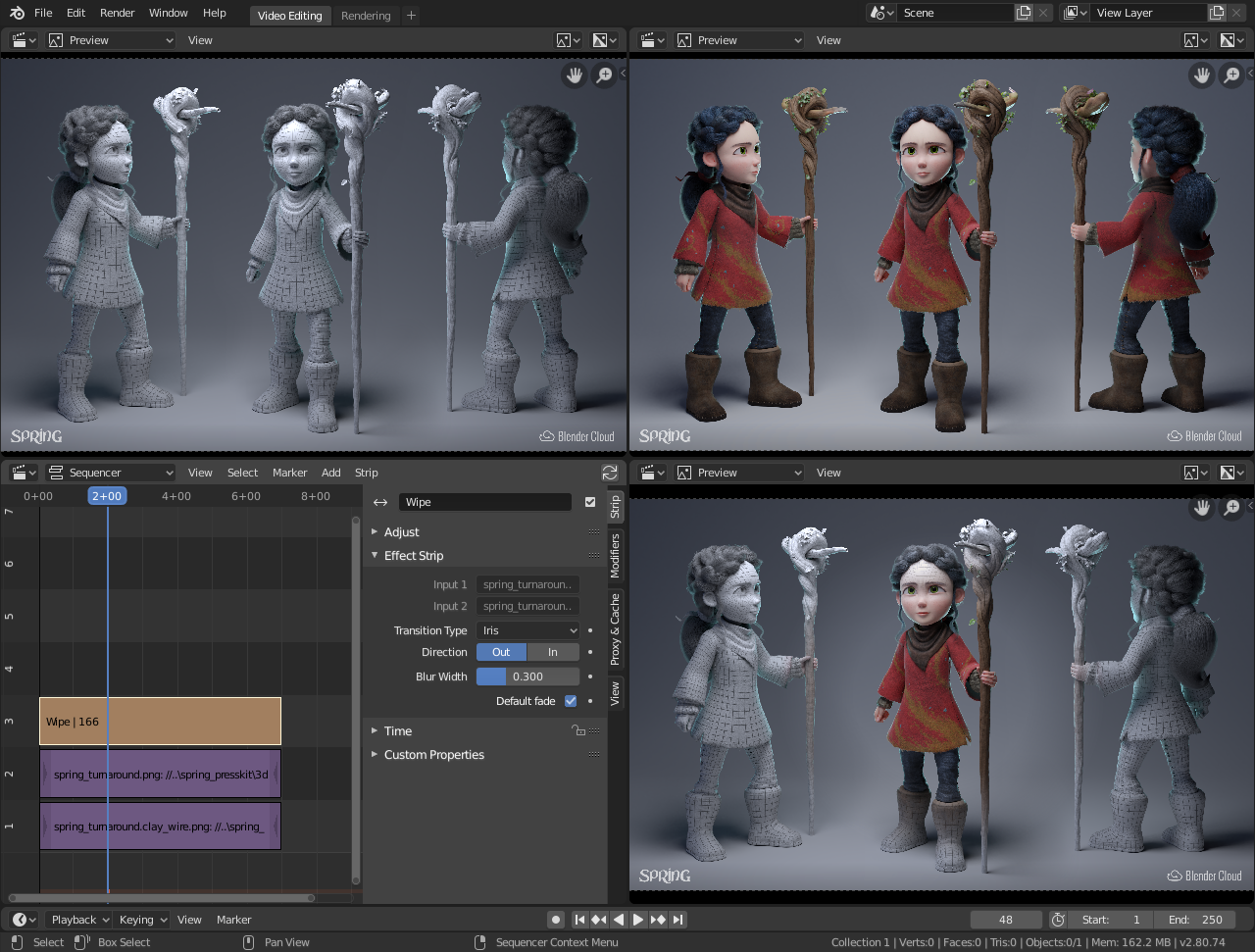Wipe (balayage)¶
The Wipe transition strip can be used to transition from one strip to the next. The wipe will have no effect if created from a single strip instead of two strips. The duration of the wipe is the intersection of the two source strips and cannot be adjusted. To adjust the start and end of the wipe you must adjust the temporal bounds of the source strips in a way that alters their intersection.
Options¶
- Transition
Le type de transition utilisé.
- Single
- Révèle la bande suivante en la dévoilant dans une ligne droite se déplaçant à travers l’image.
- Double
- Semblable à Single, mais utilise deux lignes commençant soit du milieu de l’image ou des bords. Comme le clignement d’un œil.
- Iris
- Révèle la bande suivante à travers un disque en expansion (ou en contraction. Comme l’ouverture d’une caméra ou de la pupille d’un œil. Vous pouvez flouter la transition, ainsi il ressemble à l’étalement d’encre sur du papier.
- Clock
- Comme les aiguilles d’une horloge analogique, il balaie dans le sens des aiguilles d’une montre ou (si Wipe In est activé) dans le sens inverse des aiguilles à partir de la position 9:00. Pendant le balayage, il révèle la bande suivante.
- Direction
- Controls whether to fade In or Out.
- Blur Width
- La largeur du flou utilisé pour flouter la transition.
- Angle
- Controls the angle of the line for Single and Double transition types.
- Default Fade
Automatically calculates a linear fade over the length of the strip.
Example¶

Wipe Effect.